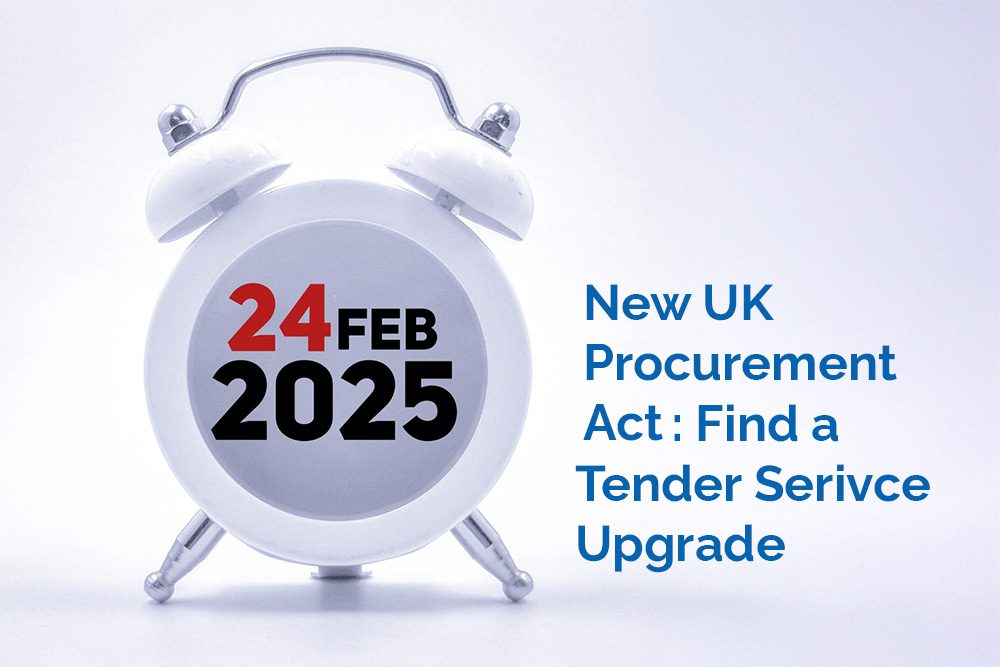Tender Win Rates is the number 1 metric you need to monitor and regularly report on. But is it one of those metrics that you take for granted and never question?
This is the litmus test for tender success – the equivalent of the finance Acid Ratio for business liquidity. Your win rate and changes to it – positive or negative, is a crucial indicator of the effectiveness of your bid management strategies and working practices.
In this article, we delve into the world of tender win rates, exploring their importance, the insights they provide, and how organisations can leverage this metric to enhance their competitive edge and drive growth.
Understanding Tender Win Rates
Before we examine the significance of win rates, let’s clarify what this metric represents. Win rates, in the context of tender management, refers to the percentage of submitted bids or proposals that a company successfully secures. In essence, it measures how effective a company is at turning potential opportunities into actual contracts.
For example, if a company submits 20 bids and wins 10 of them, its win rate would be 50%. If they submit 20 bids but only win 3 then the win rate is only 15%. And that may be a red flag that cannot be ignored!
The win-bid ratio is another metric that may be referred to when discussing bid wins. So for the example above, this may be 10 in 20 or 3 in 20. This is just another way of referencing the same information in a different format.
The Importance of Tender Win Rates
There are many factors that can impact your tender win rates, but before we look at those, let’s consider the wider business implications of win rates.
- Financial Impact: Win rates have a direct impact on a company’s financial health. Winning more tenders means securing more contracts, resulting in increased revenue and profitability. Conversely, a low win rate can lead to financial strain, as resources are expended on unsuccessful bids. And without a corresponding return on investment.
- Resource Allocation: Managing tenders is a resource-intensive process. From preparing proposals to attending meetings and negotiations, it consumes time, money, and peoplepower. High win rates indicate that focus is being given to opportunities that have a higher likelihood of success, thereby optimising resources. Low win rates indicate valuable energy and resources are being mis-directed via existing sales strategies.
- Competitive Edge: High win rates can distinguish a company as a formidable player in its industry. A track record of consistently securing contracts can enhance the company’s reputation. As well as make it the preferred choice for customers seeking reliability and quality. A string of low win rates may bring a brand’s strength into question. This may make customers reluctant to take huge financial risks on employing them.
- Team Motivation: Win rates can impact the behaviour and mental attitudes of those involved in the bid process, as well as the entire business. Tender wins can help build confidence and the momentum to ‘keep winning. While losses can severely impact morale and the motivation to do better. This is especially true where strategies, processes and submission content remain the same moving forward. This is when bid management reviews or improvement plans prove critical.
Business Insights Derived from Tender Win Rates
Now that we’ve established the importance of win rates, let’s explore the insights that this metric can provide:
- Market Positioning & Competitiveness: Win rates offer a clear indicator of where a company stands in its industry. A consistently high win rate may indicate that the company is well-positioned and competitive within that market. Conversely, a declining win rate may signal a need to reassess the company’s competitive strategy and market positioning. A low win rate may also be a good start for a business moving into a new market or introducing a new product. But of course the business would be looking for that win rate to increase to indicate strategic success.
- Strengths & Weaknesses Assessment: Analysing win rates can help identify both the strengths and weaknesses of a company’s tender management process. For instance, a high win rate in one region may reveal regional strengths, while a low win rate in another region may indicate challenges that need to be addressed. Understanding these factors can guide strategic decisions and resource allocation.
- Customer Preferences & Trends: By examining which types of tenders are won and lost, companies can gain insights into customer preferences and market trends. For example, if a company consistently wins tenders for eco-friendly products, it may indicate a growing demand for sustainability in the market. Conversely, a company that regularly loses bids, may indicate product limitations in matching client needs. This insight can inform product development and marketing strategies.
- Pricing Strategy: Win rates can also shed light on a company’s pricing strategy. If a company consistently wins contracts with lower bids, it may be under-pricing its services or products. On the other hand, consistently losing contracts due to high pricing may require a pricing adjustment.
- Evaluation of Competition: Analysing win rates can provide valuable intelligence on competitors. Understanding which competitors are frequently encountered in tenders and how often they win can inform strategies for either partnering with them or differentiating from them.
- Bid-to-Win Ratio: A lower bid-to-win ratio indicates efficiency in the tendering process, while a higher ratio suggests that more bids are required to secure a single contract. Monitoring this ratio can help organisations streamline their bidding process and/or resource their Bid Team appropriately.
Leveraging Win Rate Insights to Improve Bid Results
Now that we’ve explored the insights win rates can provide, let’s discuss how organisations can leverage these insights to improve tender management activities and deliver better quality bids.
Tender Targeting Strategy
A low win rate may indicate the business is pursuing poorly matched tender opportunities with low win probabilities. This makes it much harder for your Bid Team to generate compelling tender responses, as well as reduce available time to finesse best-matched opportunities.
Possible improvements to help you better prioritise pursuit of your best-fit opportunities may include:
- Refining your search criteria (e.g. procurement codes & keywords) to better align to your business goals and product offerings.
- Defining your qualifying criteria and ensuring it is consistently followed by Sales Team members.
- Re-setting realistic sales targets based on your market share, best-fit opportunities, win probabilities & win rates.
- Adopting a ‘Say No’ mindset to mismatched opportunities.
Tender Process Improvements
Poor or decreased win rates provide a good opportunity to take stock and review the efficiency of your tender management processes. Repetitive manual activities and duplicated data entry can create unnecessary time delays, errors and roadblocks. This may result in your Bid Team having to rush generation of tender submissions to meet deadlines.
Possible improvements to streamline processes and better manage complex tasks may include:
- Resolving transition delays between activity stages (e.g. pursuit decision to project mobilisation) with integrated tools and tech for the end-to-end bid journey.
- Automating workflows, repetitive manual activities, and tasks.
- Using bid management tools with built-in AI technology to speed up content searches and response compilation.
- Providing better visibility to live project progress and schedules to resolve roadblocks and hit deadlines.
“Implementing business process management typically delivers 30-50% productivity gains.” Forrester
Optimising Bid Resources
Your win rate will give you an indication of the return on your resources investment. Consistently low win rates mean a great deal of your teams’ time and efforts in completing tender submissions is of limited value, with no financial rewards to compensate.
So, making sure your teams are working efficiently and effectively is paramount.
Possible improvements may include:
- Ensuring rapid project mobilisation with team members notified and engaged at time of pursuit decision.
- Providing the tools for easier communication and collaboration between Bid Teams and Subject Matter Experts.
- Ensuring team members are fully supported and have the right knowledge to undertake this business-critical work.
- Cultivating a culture of learning, innovation and ongoing improvement.
“Teams with a strong sense of shared purpose and values have a 17% increase in performance compared to teams without a strong sense of purpose and values.” Harvard Business Review
Content Management
When reviewing your win rates, deeper analysis needs to be undertaken to understand tender results and outcomes. Poor quality tender responses and evaluation scores may indicate a lack of access to quality information, documentation, and content.
Possible improvements to improve content quality may include:
- Ensuring easy access to centrally stored and manged corporate information, documentation, and standard tender Q & As.
- Assigning content ownership to Subject Matter Experts with responsibility to review, update and improve content related to their area of expertise.
- Adopting continuous improvement strategies, making the most of down times to improve content quality.
“Data-driven organisations are 23 times more likely to acquire customers, six times as likely to retain customers and 19 times more likely to be profitable!” Mckinsey Global Institute
Compiling Tender Responses
Poor win rates will undoubtably reflect the quality of your tender responses and evaluation scores received. You may be factually answering the questions but are your responses compelling and convincing?
With inefficiencies in your bid management process your Bid Team and Subject Matter Experts will be hard-pressed to pick up on the nuances in questions or deliver fuller responses that secure higher scores. Due to time constraints your team may even be forced to reuse previously low scoring responses, causing repeated lost bid results.
Possible improvements to improve tender responses and increase win probabilities may include:
- Providing easy access to Procuring Agency documentation, questions and scoring methodologies as well as Sales intelligence and insight for content creators to make better informed decisions.
- Ensuring information requests are prioritised by Subject Matter Experts and completed to required standards and deadlines.
- Providing content creators with training and additional skills to be able to finesse your tender responses.
- Independently, testing, scoring, and improving your tender responses before submitting as part of the final bid.
Conclusion
In the highly competitive world of tender management, businesses cannot afford to ignore their win rates or the valuable insights that can be gained, including competitive positioning, strengths, weaknesses, and growth opportunities.
They need to be vigilant to any changes in their win rates and delve deeper to understand the reasons behind both bid losses and wins. Only then can they effectively respond to threats such as changing market demands, new competitors, or product innovations.
Reduced win rates can also be a driver for organisations to review and enhance their tender management strategies and activities. This may include streamlining processes and automating tasks as well as improving collaboration and content quality.
Achieving these new efficiencies may require the adoption of a dedicated bid management software, such as TenderEyes. Helping empower your teams to deliver better-scoring tender responses, secure more wins and ultimately drive growth and profitability.











